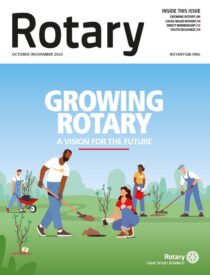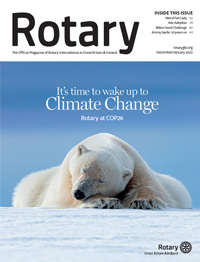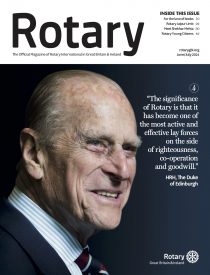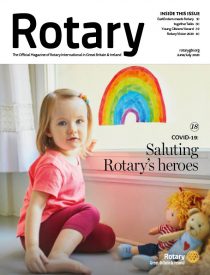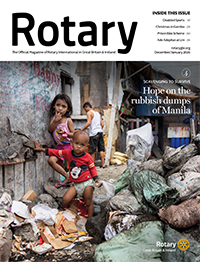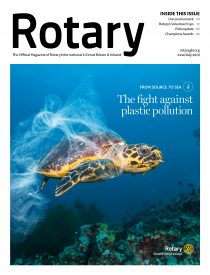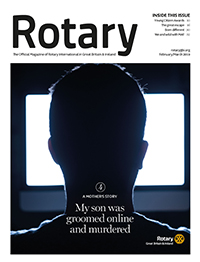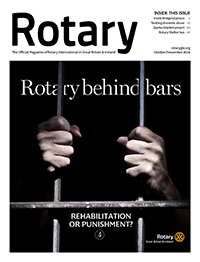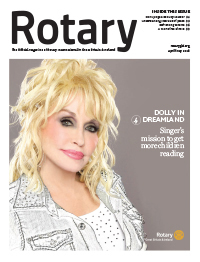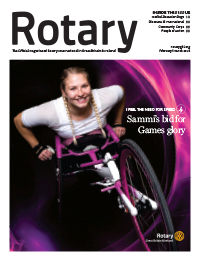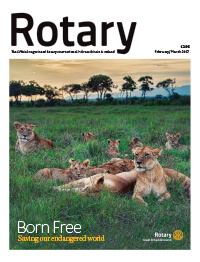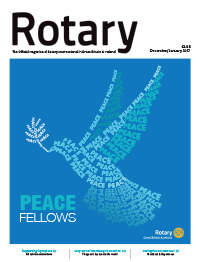Criticism, like rain, should be gentle enough to nourish a man’s growth without destroying his roots. So said Frank A. Clark, a veteran politician from Florida, who served in Congress at the turn of the last century.
I am not sure if he was a Rotarian, but these are wise words all the same.
So, a recent Rotary International survey, asking Rotarians around the world for their thoughts to their regional magazines, provided some extremely welcome and useful information.
Never be afraid of feedback. I’ve always believed those who plough a lone furrow, without ever looking up, will often find themselves heading in the wrong direction.
So thank you for the 4,701 survey responses from Rotarians in Great Britain and Ireland which offered plenty of food for thought. That is a very good sample size, reflecting a response rate of around 13%.


What was encouraging was how favourable the magazine is received, both in print form and digitally.
What was noteworthy too, was how much time you spend reading Rotary.
The impressive response rate reflected how the magazine is valued by you.
Most believe it increases their understanding and connection with Rotary.
Of course you can’t please everyone all the time, but trends across most categories were pleasing.
Clearly, there are areas for improvement. Story relevance, and a better reflection to Rotary’s People of Action, are two areas where we need to up our game.
However, the two most pleasing statistics were the passion for print, and how 79% of folk are happy with their subscription to Rotary magazine.
The fall-out from the February’s environment-focused issue of Rotary magazine is still being felt.
My digital postbag went into overdrive with a couple of hundred emails – from the downright rude, to the vast majority delighted that Rotary is embracing the environment as its seventh Area of Focus.
There was much guffawing about the magazine’s plastic cover, even though the wrapping clearly stated: “the magazine is printed and wrapped in 100% recyclable materials”.
But, as promised, I can state here that the June issue of Rotary will be delivered in a recycled paper wrapper. This is definitely, a step in the right direction.
Later on this year, hopefully once the pandemic is over, we will launch a ‘Read It & Leave It’ campaign.
This will encourage Rotarians to recycle their magazine, fixing club contact details to the front cover, and leaving them in GP surgeries, community centres, coffee shops and business receptions promoting Rotary to their communities.
The zany world of Zoom has opened up many doors which would otherwise have been closed.
In just four months, I have spoken at more than 25 meetings in Great Britain and Ireland, and also overseas, about why public image is paramount to grow Rotary – especially in a post-Covid world.
I have explained how Rotary’s communications strategy is two-pronged; print and digital. It is the best way of connecting with existing Rotarians, while reaching out to an external audience.
Debate has been robust and the feedback has been honest.
I spoke to Pembrey & Burry Port Rotary in Pembrokeshire, West Wales, where they have two partially-sighted members who were asking about a braille edition of Rotary magazine.
Sadly, this is something we can’t do, but it’s worth pointing out that Rotary Radio UK has just started producing its own audio version of the magazine.
Podcasting is something I am keen to explore further. Not just for the blind or partially-sighted, but also for a growing number of people who enjoy listening to podcasts and audio books.
What is the shortest word in the English language with the letters: abcdef? The answer is feedback.
Never forget that feedback is one of the essential elements of good communication. After all, good ideas remain the currency of growth.













